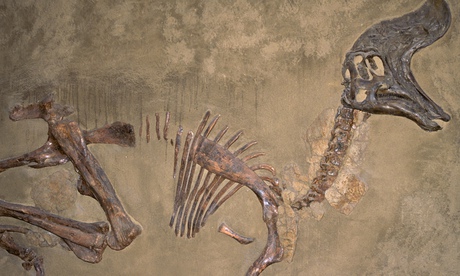
Brown tree snakes come from Papua New Guinea and Australia, where they survive on diets of lizards, bats and rats. They were considered unremarkable until the 1940s when some found their way to Guam, probably on a military ship.
The impact of Boiga irregularis was staggering. The little Pacific island's only indigenous snake was a sightless creature the size of a worm. As a result, Guam's fauna were unprepared for the predatory brown tree snake that began to eat its way through the island's native birds, including the Guam flycatcher and the Mariana fruit-dove, as well as its three native mammals, all bats. Only one of the latter survives: the Marianas flying fox, which is now considered highly endangered.
It is a sad, familiar story. In colonising our planet's nooks and crannies, most new species that we have encountered have either been wiped out directly – like the mastodons, mammoths and Neanderthals laid low by our stone age ancestors – or indirectly by the pests we introduced in our wake, like the brown tree snake or the Central American wolfsnail, introduced to Hawaii in the 1950s, which has since killed off around 90% of the islands' 700 native snail species.
Then there are the coral reefs, homes to vast numbers of marine animals, that have been dynamited by fishermen and bleached by our acidifying oceans. Or consider the swaths of the Amazon basin ploughed up for farming, thus destroying the homes of countless rainforest denizens. And for good measure, there are the fungal diseases, spread by humans, that now threaten every bat species in America and every amphibian species on the planet. When it comes to sharing a planet, we are the neighbours from hell.
"One-third of all reef-building corals, a third of all fresh-water molluscs, a third of sharks and rays, a quarter of all mammals, a fifth of all reptiles, and a sixth of all birds are headed toward oblivion," states Elizabeth Kolbert in this compelling account of human-inspired devastation. "And the losses are occurring all over: in the South Pacific, in the North Atlantic, in the Arctic and in the Sahel, in lakes and on islands, on mountaintops and in valleys."
As a result, we now find ourselves in the midst of a great extinction event, the sixth to strike our planet over the last half billion years. Past culprits have included asteroid impacts, which did for the dinosaurs 66m years ago, and soaring carbon dioxide levels which, 252m years ago, triggered extreme global warming and the extinctions of 96% of all marine species and 70% of all terrestrial vertebrate species. "As in Tolstoy, every extinction event appears to be unhappy, and fatally so, in its own way," adds Kolbert.
The crucial point about the current extinction is that the agent involved is not an inanimate object or a geophysical force but a living creature, Homo sapiens. We may have succeeded extravagantly on Earth but we have done so at the expense of just about every other species.
It is a disquieting tale, related with rigour and restraint by Kolbert who takes us on a journey to central Panama in a futile hunt for golden frogs and other lost amphibians; to the Icelandic island of Eldey, where the last great auk – a flightless bird once common in the northern hemisphere – was strangled by egg collectors in June 1844; and to Australia's One Tree Island, where scientists are studying the decline of coral reefs, which – later this century – are likely to be the first complete ecosystem to be wiped from the planet.
We live in an era defined by extinctions. Yet the concept is fairly new. Until the 18th century, when French anatomist Georges Cuvier decided the elephant-like remains of a creature found in the US were that of a mastodon – an "especes perdues" or lost species – such fossil finds were always assumed to belong to creatures that still lived. They were just somewhere else. "Such is the economy of nature," claimed Thomas Jefferson, who took a keen interest in the strange bones being dug up in his new republic.
However, Cuvier persisted and such was his skill as an anatomist and showman that he triumphed. "On the basis of a few scatter bones, Cuvier had conceived of a whole new way of looking at life," notes Kolbert. "Species died out. This was not an isolated but a widespread phenomenon."
Cuvier would no doubt be appalled to discover just how common extinctions would become. Yet they are a certain facet of modern existence and remain our greatest biological concern – for in destroying all these other species, it is not at all clear that Homo sapiens will be able to withstand the forces it has unleashed. As ecologist Paul Ehrlich puts it: "In pushing other species to extinction, humanity is busy sawing off the limb on which it perches."

No comments:
Post a Comment